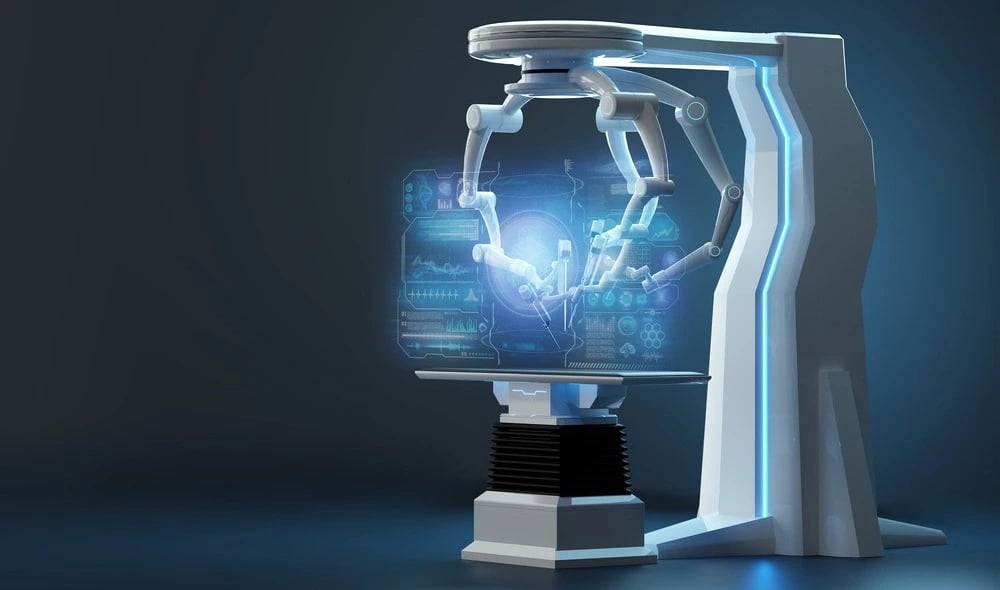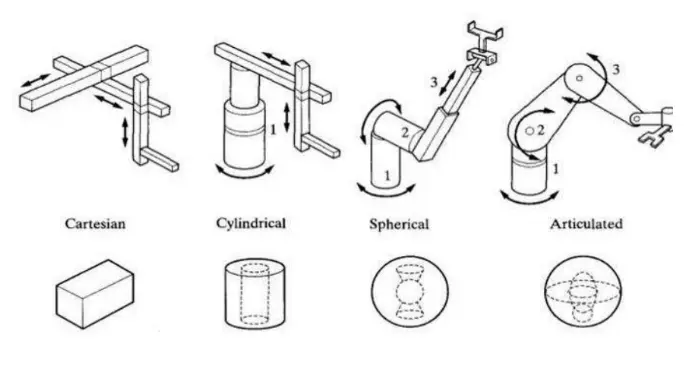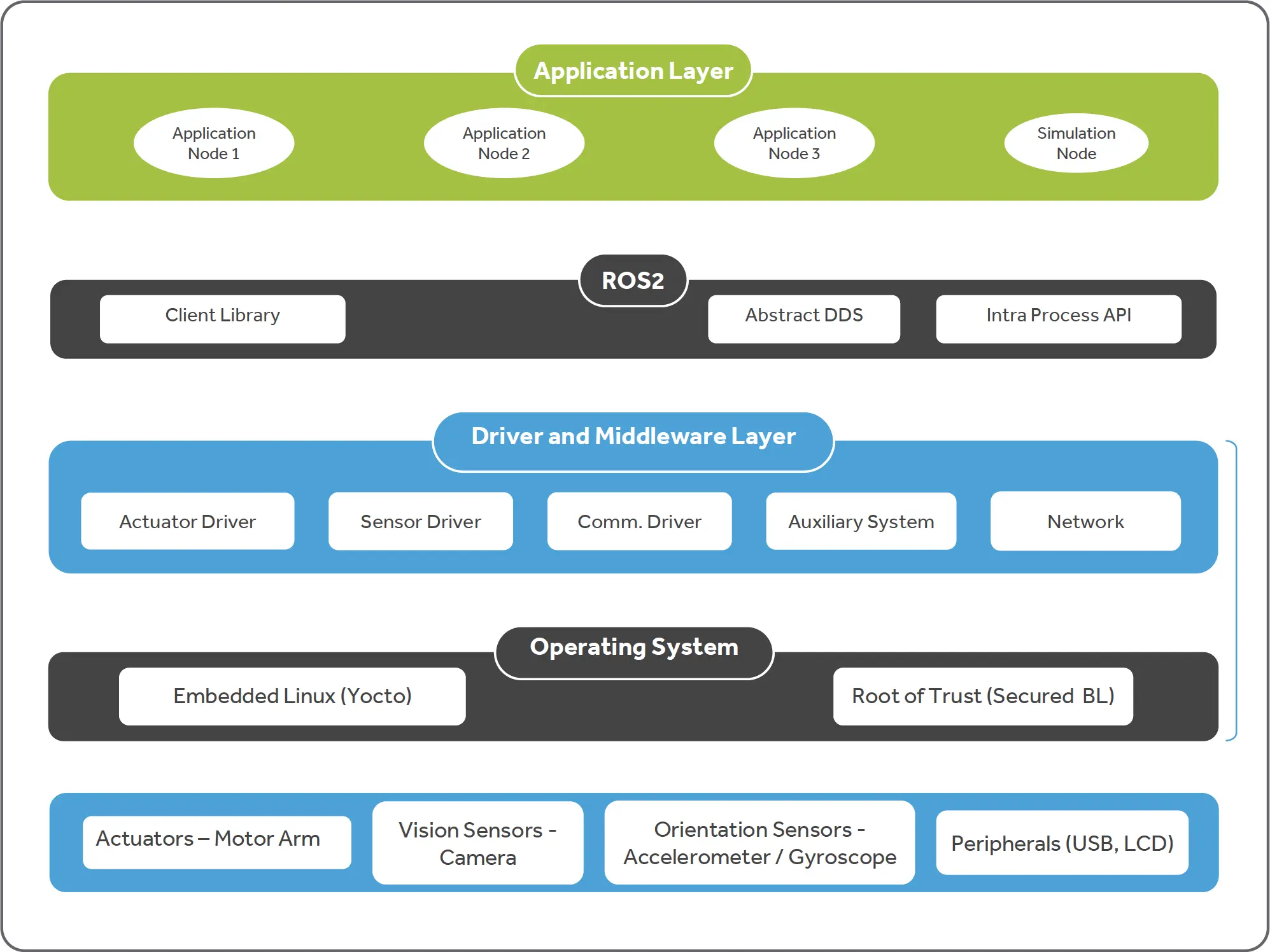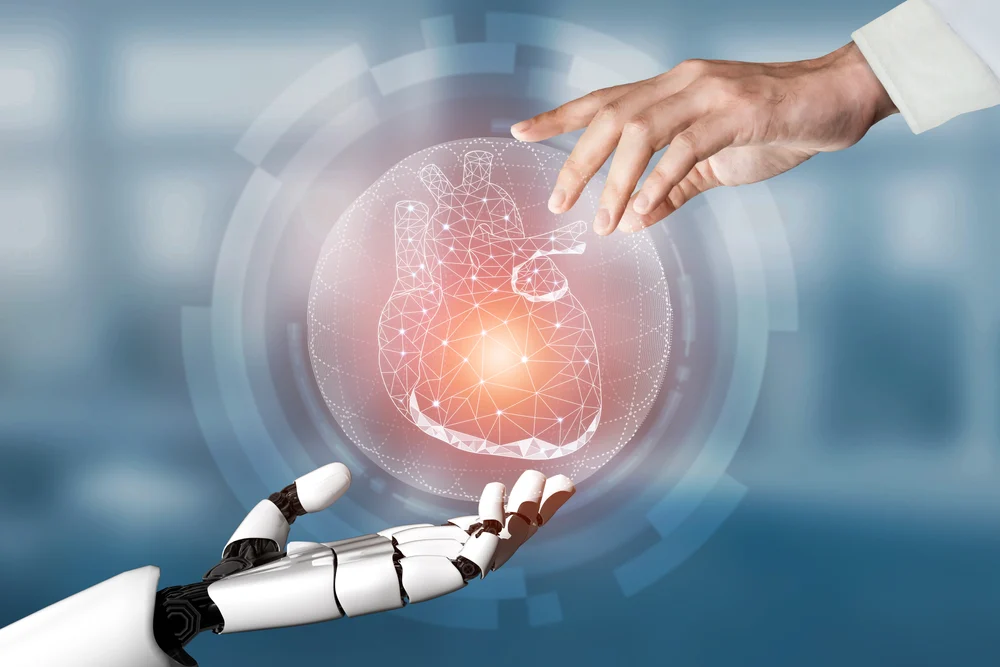
From automotive to industrial, medicine to manufacturing, and healthcare, industries are increasingly using robotics to improve productivity and reliability. Repetitive and mundane tasks can be easily undertaken by a robot, freeing up human resources for higher-level tasks. Robots are available in many sizes and configurations, from simple cartesian coordinate movements to sophisticated collaborative robots.
The major types of robots are Articulat, Cartesian, SCARA, Delta, and Cobot. As each has strengths and limitations, this paper provides guidelines for selecting the right robot to suit business needs and describes different components of the robot technology stack.
Building a robot capable of maneuvering an intended environment is critical. Ask yourself what platform and type of maneuverability will fit your project needs.
The section below discusses different maneuver capabilities and their application.
Types of robotics arms
There are six major types of robotic arm configurations: Cartesian, Cylindrical, Spherical, Selective Compliance Articulated Robot Arm (SCARA), Articulate, and Delta (Parallel).
The Robotic arm has already been used extensively in the manufacturing and automotive industries.
Work profile of robotic arms
The work profile of a robotic arm determines which type suits an application. Work profile essentially means the reach of the robotic arm in a particular environment that enables performing its task. The work profile for the various robotic arm configurations differs.

There are a wide variety of factors that invalidate the assumptions made during the test efforts. Such factors include the rest of the software stack, the quality of the sensors, actuators, and communication infrastructure, and the physical environment. Open-source robotics platforms provide a solution to this very problem. An open platform is a complete recipe for building, programming, and using a robot.
The graphic below shows the architecture that uses the Robot Operating System (ROS) open platform. It is well-supported, relatively affordable, and extensible. ROS enables users to leverage various types of algorithms and simulation packages. It provides a common ground of testing and virtual commissioning by integrating with tools such as Gazebo and Rviz.
The software-defined platform is built on reusable components which adapt to customer needs and provide enablers for various robotic services. The diagram below depicts a general service/application layer that the robot platform should provide.

Robotics technology stack is defined in layers in the platform namely HW, OS abstraction, Driver and Middleware layer, ROS layer, SW module, and Application layer
Hosts multiple hardware and is supported by drivers at upper layers.
A custom operating system is built using the Yocto project or porting of RTOS and provides the abstraction of a large set of functionalities.
The operating system is supported by drivers and middleware to integrate various peripherals connected wired or wirelessly.
This provides designed services such as hardware abstraction, low-level device control, implementation of commonly used functionality, and send/receive messages related to multiplex sensor data, control, state, and actuator.
ROS-based robotics lib has the mechanism to control robotic arms, sensors, use simulators, and connect to the cloud.
A custom workflow is defined using robotics lib to accelerate the solution design and development using robust and tested underlying layers. Several reusable blocks are used for end application development.
The chosen robot can be programmed to perform a certain task repeatedly. However, for sophisticated tasks, AI allows the technology to perform intricate and dynamic tasks, often with superhuman accuracy
The platform supports a camera module through which one can achieve computer vision and object recognition. AI-based image recognition algorithms have incredible accuracy and allow robotic arms to perform tasks such as locating and placing specific objects. Using the cloud, various analytics can be done in the background to train the algorithm and improve efficiency.
For Natural Intelligence (NI), one needs a camera with a 360-degree view as well as collision map, depth calculations and 3D view of the surrounding environment. Using this data, NI helps to navigate the robot and avoid the collision.


When choosing a software platform, the following points can be considered: Modular design: Is the design approach breaking the larger code into smaller sections that hold specific functions? Modular design is shown to improve the design process by allowing better reusability, workload handling, and easier debugging processes.
Edge processing vs cloud processing: AI modules can run on the edge device to make the inference quick and realtime, and minimal data for alerts can be sent to the cloud. Here, cloud analytics can be done for metrics such as usage patterns, efficiency, diagnosis and logging.
Platform layer vs application layer: The base platform should provide the required SW (built on open source with advantages of cost and community support) and HW (standard off-the-shelf vendor-independent) that is needed to build an application for the requirements of a specific customer.
Test suite to verify various libraries and integrate HW and SW modules.
Team to support and customize as per your need.
In approaching an investment in robotics, one should consider the various aspects of an application prior to making a final selection. Here are a few more factors to consider - reach and payload, flexibility, speed, space and footprint, maintainability, repairability, availability, and standardization.

Cyient offers end-to-end solutions and services for end customers, leveraging our in-house software-defined platform, V&V factory model, and experience in robotics.
For B2B, Cyient can collaborate with robot arm manufacturers and integrate with the AIenabled robot platform built in-house, making it accessible to a large customer base. OEM’s for sensors, actuators, and robot arms will have a base platform to try and integrate their products and reduce the time-to-market, brand awareness, increased sales, improved efficiency and productivity and customer-centric experience.
The proliferation of robot technologies has enabled businesses of all sizes to access the benefits of automation. Which one is the best? It is usually the one that is the best-fit in terms of meeting business needs, plant safety, space utilization, going-in cost, and after-sales support.
The customer should be focused on platformbased robotics application development with a modular design approach as well as robust, tested, and reusable HW and SW components.
As a solution provider, Cyient works on an embedded framework that can be applied to a broad spectrum of product portfolios to align with Megatrends such as “Intelligent and Connected Products,” “Automation and Edge AI,” and “Human Well Being.”
Cyient (Estd: 1991, NSE: CYIENT) is a consulting-led, industry-centric, global Technology Solutions company. We enable our customers to apply technology imaginatively across their value chain to solve problems that matter. We are committed to designing tomorrow together with our stakeholders and being a culturally inclusive, socially responsible, and environmentally sustainable organization.
For more information, please visit www.cyient.com
Follow news about the company at @Cyient

Sumeet Das is a lead architect in Cyient and has experience in design and development of embedded systems for industrial automation and medical use.

Vishwanath Pratap, who leads solutions for medical devices in Cyient, has experience in design and development of medical devices throughout the product development cycle.
Cyient (Estd: 1991, NSE: CYIENT)delivers Intelligent Engineering solutions for Digital, Autonomous and Sustainable Future
© Cyient 2024. All Rights Reserved.